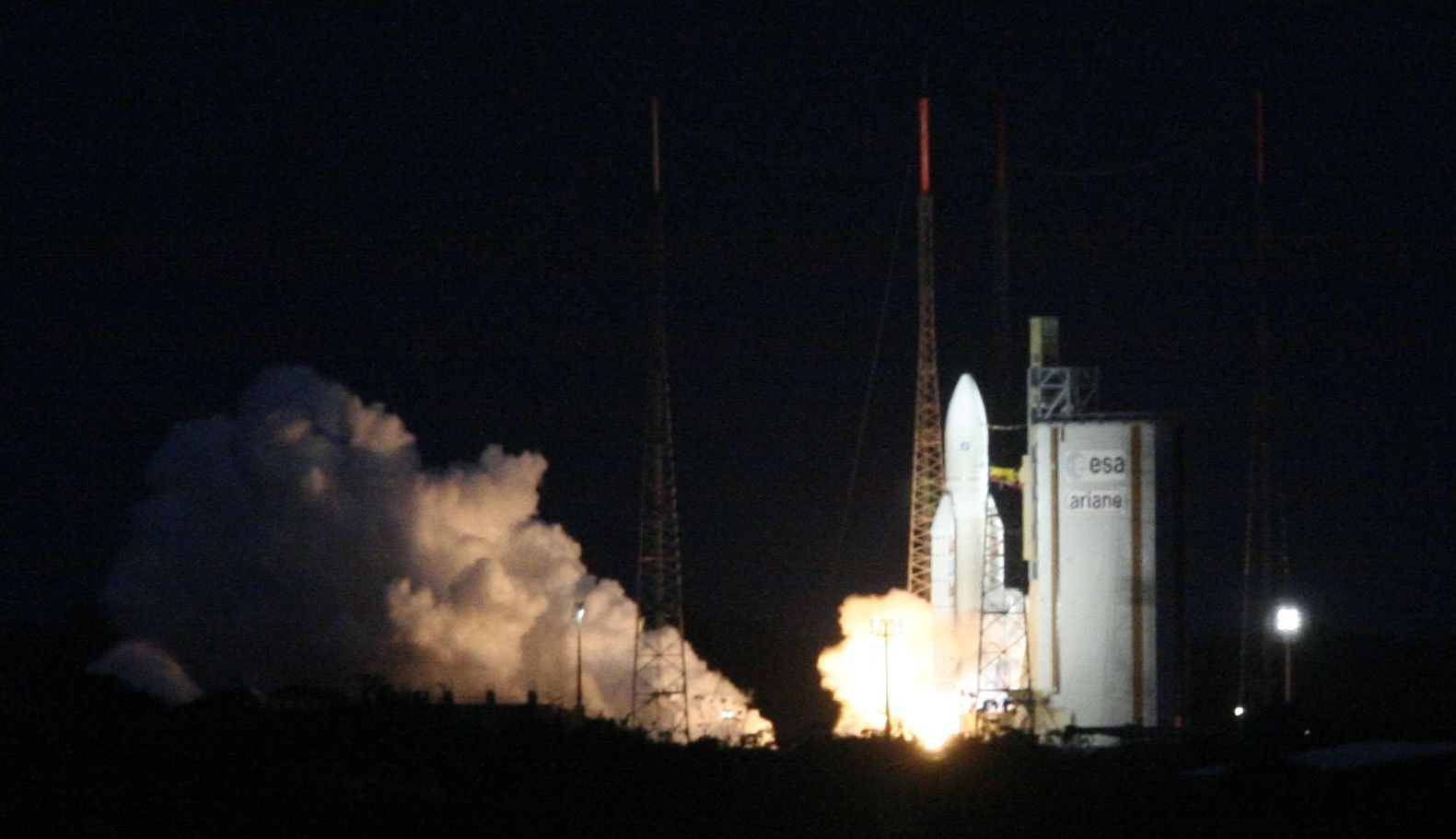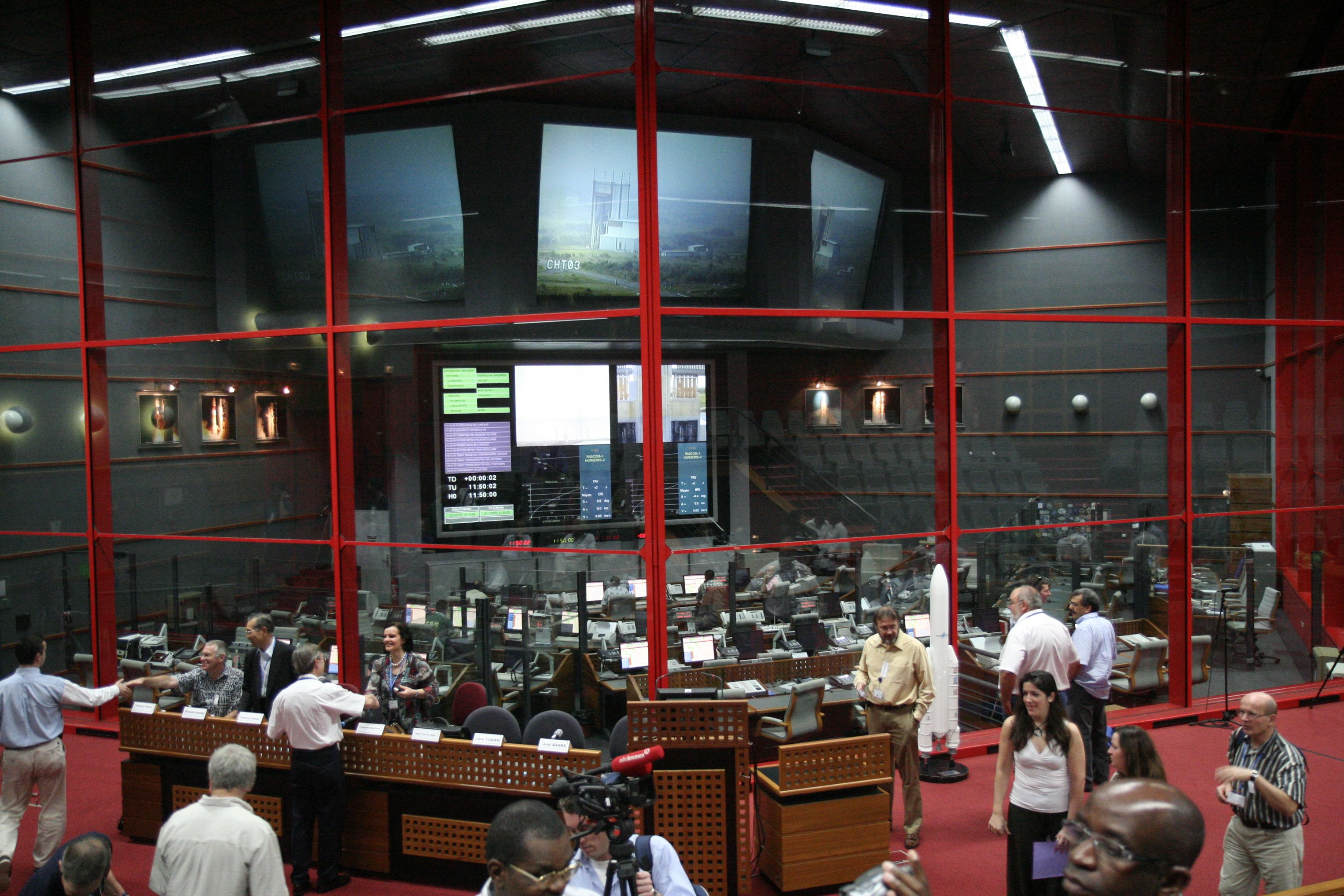Launching a satellite
DID YOU KNOW?
The main boosters in the Ariane 5 satellite launcher uses Liquid Hydrogen and Liquid Oxygen as the propellant.
After completion, a newly manufactured satellite is transferred to the launch site for final testing and fuelling, before being mated to the launch vehicle. The launch is a complex operation conducted in several stages, which differ according to the system used.

One common method of placing satellites into geostationary orbit is based on the Hohmann transfer principle. Using this system the satellite is placed into a low earth orbit with an altitude of around 300 kilometers. Once in the correct position in this orbit rockets are fired to put the satellite into an elliptical orbit with the perigee at the low earth orbit and the apogee at the geostationary orbit. When the satellite reaches the final altitude the rocket or booster is again fired to retain it in the geostationary orbit with the correct velocity.
Alternatively the satellite is launched directly into the elliptical transfer orbit, typically between 200km and several thousand kilometres from the Earth. Again when the satellite is at the required altitude the rockets are fired to transfer it into the required orbit with the correct velocity.
|
|
| Mission Control, Arianespace, French Guyana |
Mission control monitors the launch and once the satellite has been released by the launch vehicle into geosynchronous orbit, the satellite operator takes over to acquire the telemetry signal; monitor proper deployment of the solar arrays; fire the necessary satellite motors to fly the satellite to its proper location and then, puts it through a series of in-orbit tests before validating the satellite and ground stations for commercial entry into service.
European built Ariane launcher is one of the world's most reliable launch vehicles.
